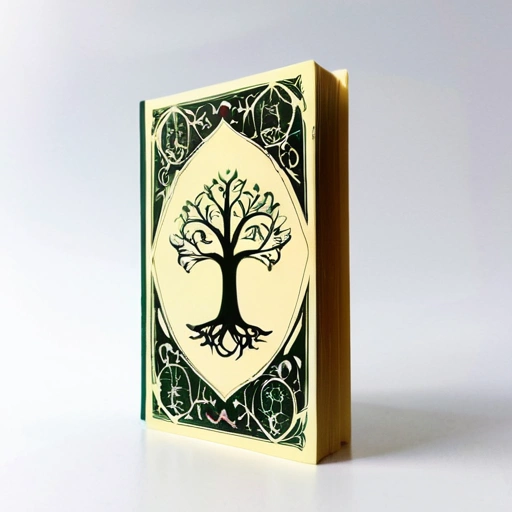Looking Deeper into Braucherei to Understand it Better
Braucherei, also known as powwow, is a unique form of folk magic practiced by the Pennsylvania Dutch. This ancient tradition has been passed down through families for generations, including some well-known historical figures such as Nelson Rehmeyer, whose house has become infamous as the “Hex House” in modern legend. The magic of Braucherei combines Christian mysticism with healing rituals, protective spells, and even the removal of hexes. However, the practice is steeped in both history and controversy, with modern practitioners continuing to debate its true nature and transmission.
Traditionally, Braucherei is passed down across genders—father to daughter, mother to son—a system of inheritance that some families, like the one described in the Reddit thread, still uphold today. Others, however, have relaxed this custom, with practitioners like Rob Phoenix, Gretchen Swank, and Rob Schreiwer opening their teachings to students of any gender. This more inclusive approach represents a broader shift in modern Braucherei as the practice has evolved and adapted to the needs of contemporary students.
Yet, even with these changes, controversies persist. One of the central debates revolves around the ethics of charging money for teaching Braucherei. Traditionally, Braucherei was seen as a sacred practice, passed down without financial compensation. Charging for services, especially healing or teaching, remains a point of contention within the community. Practitioners like Rob Phoenix, for example, have faced criticism for accepting payment, while others like Rob Schreiwer offer their teachings for free, holding fast to the belief that true Brauchers do not profit from their spiritual work.
Moreover, the divide between Christian Braucherei and more pagan interpretations like those of the Urglaawe movement highlights the ongoing tension within the tradition. While Phoenix insists that Braucherei should remain a purely Christian practice, others, including the Black Forest Clan, see it as part of a syncretic pagan tradition that blends Christian and pre-Christian elements. The Pennsylvania Dutch community remains divided on this issue, with those closer to Christianity rejecting the notion that Braucherei could be rooted in anything other than their faith.
The debate is far from settled. Historically, Braucherei was practiced openly within the religiously diverse colony of Pennsylvania, where settlers of various faiths coexisted. Himmelsbriefs—mystical letters from heaven that contained prayers for protection—were common during the 18th and 19th centuries, often reflecting a live and let live ethos. This perspective was shaped by the cultural heritage of those who had fled religious persecution in Europe, and it’s reflected in the famous phrase, “Let each be as he is, so you also can remain as you are.”
For those interested in learning more about the rich tradition of Braucherei, several key texts are essential reading. These include The Long Lost Friend by Johann Georg Hohman, one of the most influential spellbooks of the Pennsylvania Dutch folk magic tradition, and Egyptian Secrets of Albertus Magnus, another important grimoire. The Secrets of the Psalms, translated by Selig, a Jewish convert and practicing Braucher, provides further insight into the syncretic nature of the practice. Additionally, Patrick Donmoyer’s Powwowing in Pennsylvania offers a well-researched history of the tradition, giving readers a clearer understanding of how Braucherei has evolved over time. For more recommendations, visit the essential book list at Braucherei Spellbook.
Despite the controversies, Braucherei has remained a living tradition, though it has often been practiced quietly due to the pressures of societal expectations, particularly during the Satanic Panic. Modern practitioners, like those in the Urglaawe and Heathen communities, are part of an ongoing revitalization of the practice, aiming to bring Braucherei back into the spotlight. This revival is not only academic but also personal, as people seek to reconnect with their spiritual heritage.
For those wishing to learn more about Braucherei, the journey often starts by finding a teacher, though this can be challenging. Many of the older practitioners are reluctant to speak with those who don’t speak the Pennsylvania Dutch language, while others are more open but insist on certain conditions, such as being exclusively Christian or having no multireligious affiliations. However, there are also those who are more open to students of different backgrounds, provided they approach the tradition with respect and dedication.
As with any spiritual path, Braucherei is deeply personal. Whether you approach it as a form of faith healing, as a Christopagan, or as part of a syncretic tradition, it offers a powerful connection to both spiritual protection and healing. And while the community may be divided on how the tradition should be taught and practiced, the core ethos of Braucherei—to heal and protect—remains steadfast.
If you’re curious about this ancient practice and wish to explore its rituals and spells further, consider picking up one of the many books on Pennsylvania Dutch folk magic or seeking out teachers within the community. Whether you are looking for a Christian path or are interested in its pagan roots, Braucherei offers a spiritual practice deeply tied to the history and landscape of Pennsylvania.
